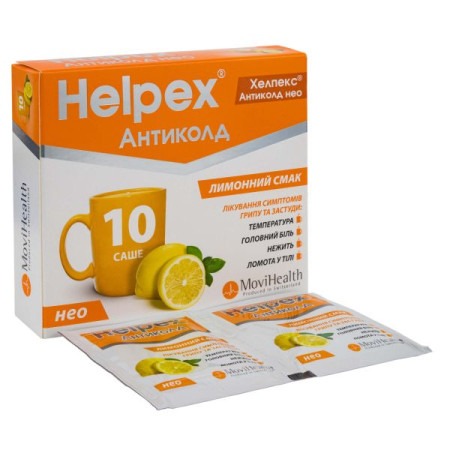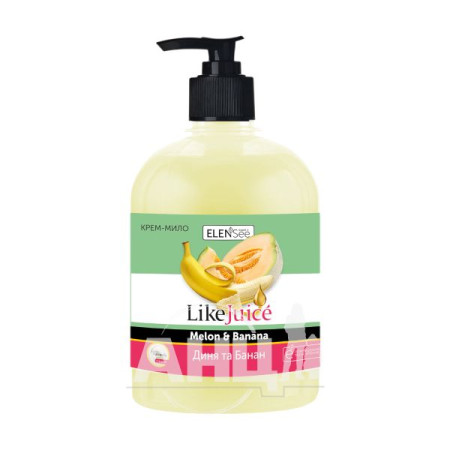Berlithion 600 soft capsules 600 mg blister No. 30

Instructions for Berlition 600 soft capsules 600 mg blister No. 30
Composition
active ingredient: thioctic acid;
1 soft capsule contains 600 mg of thioctic acid;
excipients: solid fat, medium chain triglycerides;
capsule shell: sorbitol solution, non-crystallizing, 70% (E 420); glycerin (85%); gelatin; titanium dioxide (E 171); carmine lake (E 120).
Dosage form
Soft capsules.
Main physicochemical properties: soft gelatin elongated capsule of pink color containing a yellow pasty mass.
Pharmacotherapeutic group
Other agents that affect the digestive system and metabolic processes.
ATX code A16A X01.
Pharmacological properties
Pharmacodynamics
Thioctic acid is a vitamin-like substance that is produced in the body and acts as a coenzyme in the oxidative decarboxylation of a-keto acids. Hyperglycemia caused by diabetes mellitus leads to the deposition of glucose on the matrix proteins of blood vessels and the formation of so-called advanced glycation end products. This process leads to a decrease in endoneural blood flow and endoneural hypoxia/ischemia, which is associated with increased formation of free oxygen radicals that damage peripheral nerves. Depletion of the antioxidant glutathione in peripheral nerves has also been noted.
In studies on rats, thioctic acid affected the biochemical process caused by diabetes mellitus, which was provoked by streptozocin, which reduced the formation of advanced glycation end products, improved endoneural blood flow, increased the physiological content of the antioxidant glutathione, which acts in the nerve affected by the diabetic process, similar to the action of an antioxidant on free oxygen radicals. Such effects indicate the ability of thioctic acid to improve the function of peripheral nerves. This applies to sensory disorders in diabetic polyneuropathy, which can manifest themselves in the form of dysesthesias and paresthesias, such as, for example, a burning sensation, pain, a feeling of numbness or tingling.
In 1995, a multicenter placebo-controlled study was conducted on the effectiveness of thioctic acid for the symptomatic treatment of diabetic polyneuropathy, which obtained data on the beneficial effect of thioctic acid on such studied symptoms as burning sensation, paresthesia, numbness, and pain.
Pharmacokinetics
After oral administration, thioctic acid is rapidly absorbed. As a result of significant presystemic metabolism, the absolute bioavailability (compared to intravenous administration) of thioctic acid taken orally is approximately 20%. Due to rapid distribution in tissues, the half-life of thioctic acid in blood plasma is approximately 25 minutes. The relative bioavailability of thioctic acid when administered orally in solid dosage forms is more than 60% in proportion to the drinking solution. The maximum plasma concentration of approximately 4 μg/ml was measured approximately 30 minutes after oral administration of 600 mg of thioctic acid. In animal experiments (rats, dogs), it was possible to detect predominant renal excretion (80-90%), namely in the form of metabolites, using a radioactive label. In humans, only a small amount of the excreted intact substance is also detected in the urine. Biotransformation occurs mainly through side chain oxidation (β-oxidation) and/or by S-methylation of the corresponding thiols.
Thioctic acid interacts in vitro with metal ion complexes (e.g. cisplatin). Thioctic acid forms poorly soluble complex compounds with sugar molecules.
Indication
Paresthesia in diabetic polyneuropathy.
Contraindication
Hypersensitivity to thioctic acid or to any other component of the drug.
Interaction with other medicinal products and other types of interactions
The effectiveness of cisplatin is reduced during simultaneous treatment with the drug Berlition® 600 capsules.
Thioctic acid is a metal chelator and therefore, according to the basic principles of pharmacotherapy, it should not be used simultaneously with metal compounds (for example, with food supplements containing iron, magnesium, or with dairy products, since they contain calcium). If the total daily dose of Berlition® 600 capsules is taken 30 minutes before breakfast, then food supplements containing iron and magnesium can be taken in the afternoon or evening.
Regular consumption of alcoholic beverages is a significant risk factor for the development and progression of the clinical picture of neuropathy and, therefore, may also interfere with the effectiveness of treatment with Berlition® 600 capsules. Therefore, patients with diabetic polyneuropathy are strongly advised to abstain from alcohol. This also applies to periods when therapy is not being carried out.
Application features
The main factor in the effective treatment of diabetic polyneuropathy is optimal correction of the patient's blood sugar level. At the beginning of treatment of polyneuropathy, due to regeneration processes, a short-term increase in paresthesias with a feeling of crawling ants is possible. When using thioctic acid in patients with diabetes mellitus, frequent monitoring of blood glucose levels is necessary. In some cases, it is necessary to reduce the doses of antidiabetic drugs to prevent the development of hypoglycemia.
Berlition® 600 capsules contain sorbitol, so it should not be used by patients with a rare hereditary disease such as fructose intolerance.
One case of autoimmune insulin syndrome (AIS) has been reported during treatment with thioctic acid. Patients with certain HLA (human leukocyte antigen) genotypes, such as the HLA-DRB1*04:06 and HLA-DRB1*04:03 alleles, are more likely to develop AIS during treatment with thioctic acid. The HLA-DRB1*04:03 allele (odds ratio for AIS 1.6) is predominantly found in Caucasians, with a higher prevalence in Southern Europe than in Northern Europe. The HLA-DRB1*04:06 allele (odds ratio for AIS 56.6) is predominantly found in Japanese and Korean patients. The possibility of developing AIS in patients using thioctic acid should be taken into account in the differential diagnosis of spontaneous hypoglycemia (see section "Adverse reactions").
Use during pregnancy or breastfeeding
Fertility.
A reproductive toxicity study revealed no evidence of an effect on fertility.
Pregnancy.
Berlition® 600 capsules should be used during pregnancy only after careful assessment of the benefit/risk ratio.
Lactation.
There is no data on the penetration of thioctic acid or its metabolites into breast milk. A decision should be made whether to discontinue breastfeeding or discontinue the drug Berlition® 600 capsules taking into account the benefit of breastfeeding for the child and the benefit of therapy for the woman.
Ability to influence reaction speed when driving vehicles or other mechanisms
During treatment, caution should be exercised when driving vehicles, working with other mechanisms, or engaging in other potentially hazardous activities that require increased attention and speed of psychomotor reactions, due to the possibility of adverse reactions such as hypoglycemia, dizziness, and visual impairment.
Method of administration and doses
Adults.
Doses
The daily dose is 1 capsule of BerlitionÒ 600 capsules (equivalent to 600 mg of thioctic acid), which should be taken as a single dose approximately 30 minutes before the first meal. In case of intense paresthesia, treatment can be initiated with infusion therapy with thioctic acid.
Method of application
BerlitionÒ 600 capsules should be taken on an empty stomach, swallowed whole and with sufficient liquid. Simultaneous food intake may interfere with absorption, so for patients with a long gastric emptying time, it is especially important that the drug is taken half an hour before breakfast. Since diabetic polyneuropathy is a chronic disease, long-term therapy may be necessary. The basis of treatment for diabetic polyneuropathy is optimal diabetic control.
Children
BerlitionÒ 600 capsules are not intended for the treatment of children and adolescents due to the lack of clinical experience.
Overdose
Treatment. Even if severe intoxication with Berlition® 600 capsules is suspected (e.g., ingestion of more than 10 capsules of 600 mg for adults or doses of more than 50 mg/kg of body weight for children), immediate hospitalization and the use of measures in accordance with the general principles of poisoning treatment (e.g., induction of vomiting, gastric lavage, administration of activated charcoal, etc.) are indicated. Treatment of generalized convulsions, lactic acidosis, and other life-threatening consequences of intoxication should be based on the principles of modern intensive care and be symptomatic. To date, the feasibility of using hemodialysis, hemoperfusion, or filtration methods as part of the forced removal of thioctic acid has not been confirmed.
Adverse reactions
The following classification was used to assess the frequency of adverse events:
very common: ≥ 1/10;
common: ≥ 1/100 – < 1/10;
uncommon: ≥ 1/1000 – < 1/100;
rare: ³ 1/10000 – < 1/1000;
very rare: < 1/10,000;
unknown: cannot be estimated from the available data.
Immune system disorders.
Very rare: allergic reactions, including skin rashes, hives (urticaria), itching, difficulty breathing.
Not known: autoimmune insulin syndrome (see section "Special warnings and precautions for use"), eczema.
Metabolic and nutritional disorders.
Very rare: hypoglycemia.
Nervous system disorders.
Common: dizziness.
Very rare: dysgeusia, headache, hyperhidrosis.
Visual impairment.
Very rare: visual disturbances.
Digestive tract disorders.
Common: nausea.
Very rare: vomiting, gastrointestinal pain, diarrhea.
General disorders.
Very rare: decreased blood glucose levels associated with improved glucose absorption. Symptoms similar to hypoglycemia: dizziness, sweating, headache and visual disturbances.
Reporting of suspected adverse reactions.
Reporting suspected adverse reactions after a medicine has been authorised is important. This allows for continued monitoring of the benefit/risk balance of the medicine. Healthcare professionals are encouraged to report any suspected adverse reactions.
Expiration date
3 years.
Storage conditions
Store at a temperature not exceeding 25 °C.
Keep out of reach of children.
Packaging
10 capsules in a blister; 3 blisters in a cardboard box.
Vacation category
According to the recipe.
Producer
BERLIN-CHEMI AG.
Location of the manufacturer and address of its place of business
Glienicker Weg 125, 12489 Berlin, Germany.
There are no reviews for this product.
There are no reviews for this product, be the first to leave your review.
No questions about this product, be the first and ask your question.















